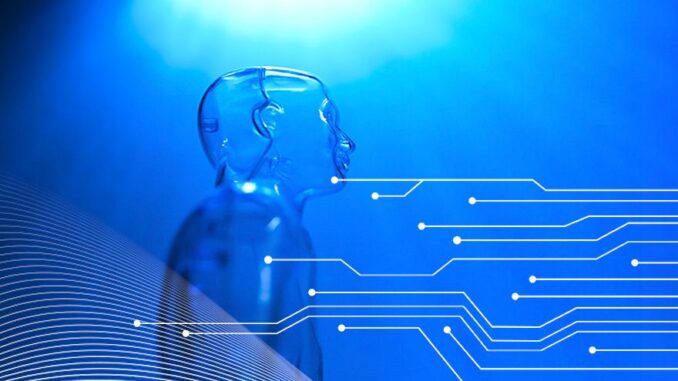
“Man-made intelligence-controlled testing” generally refers to the application of artificial intelligence (AI) and machine learning (ML) techniques to improve, automate, and manage various testing processes across industries.
This concept can be broken down into several key areas, including software testing, quality assurance, and even testing in other domains such as healthcare, manufacturing, and education. Below are some examples and considerations related to this topic:









### 1. **Applications in Software Testing**
#### a. **Automated Test Generation**
– **Test Case Generation**: AI can be used to automatically generate test cases based on requirements and existing codebases. Machine learning algorithms analyze historical test cases and code structure to create new tests efficiently.
– **Regression Testing**: AI can identify changes in code and automatically generate a focused set of regression tests to ensure that new changes do not break existing functionality.
#### b. **Intelligent Test Execution**
– **Prioritization of Tests**: AI systems can prioritize which tests to execute based on risk analysis, previous failures, or changes to the code, ensuring that the most critical tests are run first.
– **Dynamic Test Execution**: Using real-time data, AI can adapt the test execution path during runtime, allowing testers to follow the most promising routes based on earlier results.
#### c. **Error Prediction and Analysis**
– **Bug Prediction Models**: AI can analyze historical defect data to predict areas in the code that are likely to introduce bugs. This helps developers focus their efforts on high-risk components.
– **Root Cause Analysis**: Machine learning can assist in identifying the root causes of bugs by analyzing patterns in error logs and code commits.
#### d. **Performance Testing**
– **Load Testing Simulation**: AI algorithms can simulate user behavior and load patterns to test how systems perform under various conditions, helping to identify potential bottlenecks.
– **Resource Optimization**: AI can analyze resource utilization during performance tests and suggest optimizations to improve efficiency.
### 2. **Quality Assurance Beyond Software**
#### a. **Healthcare Testing**
– **Diagnostic Tools**: AI-powered systems can analyze medical data and images to support diagnostic testing, potentially improving accuracy and reducing time for results.
– **Patient Monitoring**: AI algorithms can continuously analyze patient data in real-time, identifying potential health issues that need to be tested further.
#### b. **Manufacturing Testing**
– **Product Quality Control**: AI-controlled vision systems can inspect products on production lines to identify defects in real-time, ensuring high quality and reducing waste.
– **Predictive Maintenance**: AI can analyze equipment performance data to predict when maintenance tests are necessary, preventing downtime and ensuring reliability.
#### c. **Educational Assessments**
– **Personalized Learning Assessments**: AI can tailor testing experiences based on students’ learning patterns, providing personalized assessments that adapt to individual performance.
– **Automated Grading**: AI can assist with or completely automate the grading of assignments and tests, improving efficiency and consistency in evaluations.
### 3. **Challenges and Considerations**
#### a. **Data Quality and Bias**
– **Data Integrity**: The effectiveness of AI-controlled testing heavily relies on the quality of the data used to train models. Poor data can lead to inaccurate predictions and ineffective testing.
– **Bias Mitigation**: It’s crucial to address biases in training data that might lead to unfair or skewed outcomes in testing processes.
#### b. **Human Oversight**
– **Human-in-the-Loop Approaches**: While AI can automate many tasks, human oversight is essential to validate findings, especially in critical applications like healthcare or safety-related industrial processes.
– **Transparency and Explainability**: Understanding how AI models make decisions is vital for trust and accountability, especially in regulated industries.
#### c. **Integration with Existing Systems**
– **Legacy Systems**: Integrating AI solutions into existing legacy systems can be challenging. It’s important to ensure that new AI-driven processes can coexist with traditional approaches.
– **Interoperability**: AI solutions should be able to work seamlessly with existing testing frameworks and tools to enhance productivity without significant disruptions.
### 4. **Future Trends**
#### a. **Adaptive Testing Systems**
– AI may lead to the development of adaptive testing systems that continuously learn from results and user behaviors, enabling more flexible and effective testing protocols.
#### b. **Collaboration between AI and Human Experts**
– The future may see more collaboration between AI systems and human experts, focusing on leveraging the strengths of both to achieve optimal outcomes.
#### c. **Regulatory Compliance and Standards**
– As the use of AI in testing grows, there will likely be regulatory developments that provide guidelines for its use, particularly in sensitive areas like healthcare and finance.
Man-made intelligence-controlled testing has the potential to revolutionize the testing landscape across multiple sectors, delivering enhanced efficiency, accuracy, and cost savings. However, organizations must navigate the complexities and challenges associated with implementing these AI-driven solutions to realize their full potential.


Leave a Reply